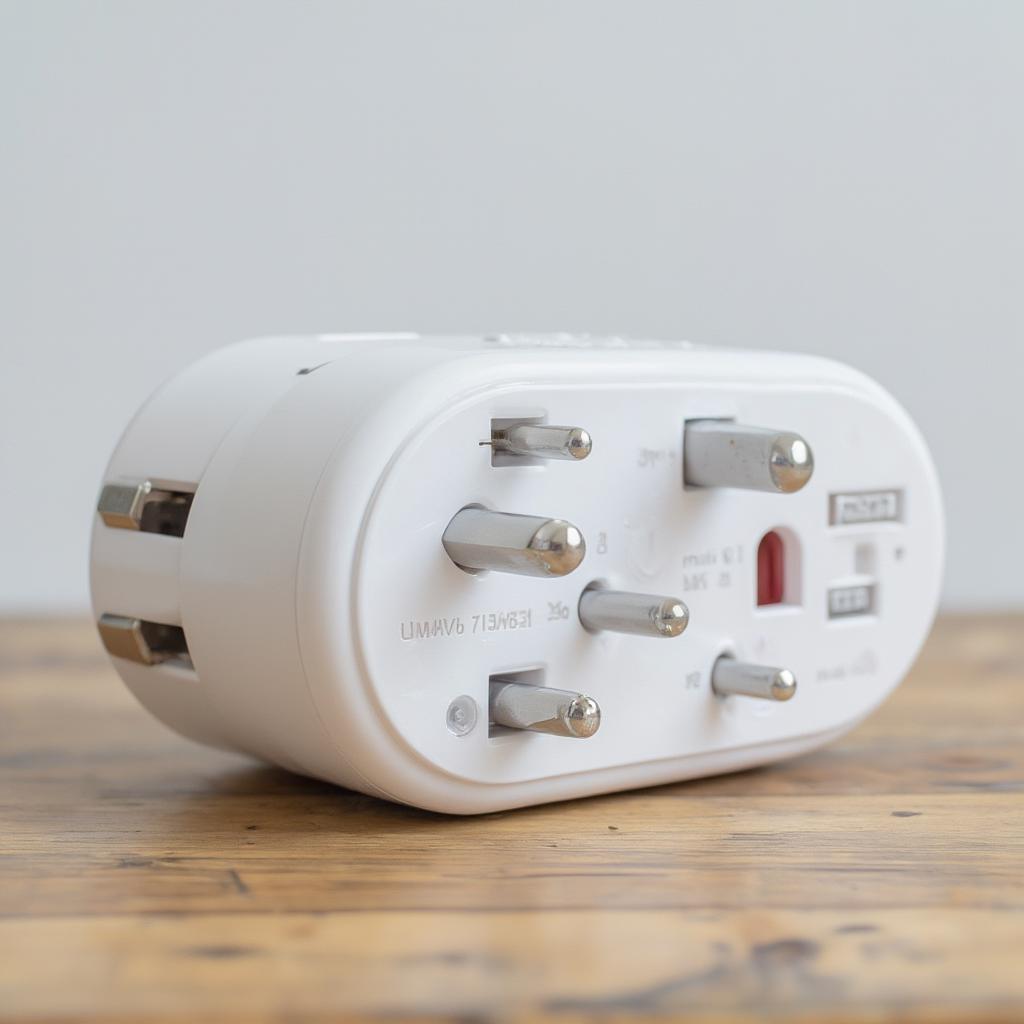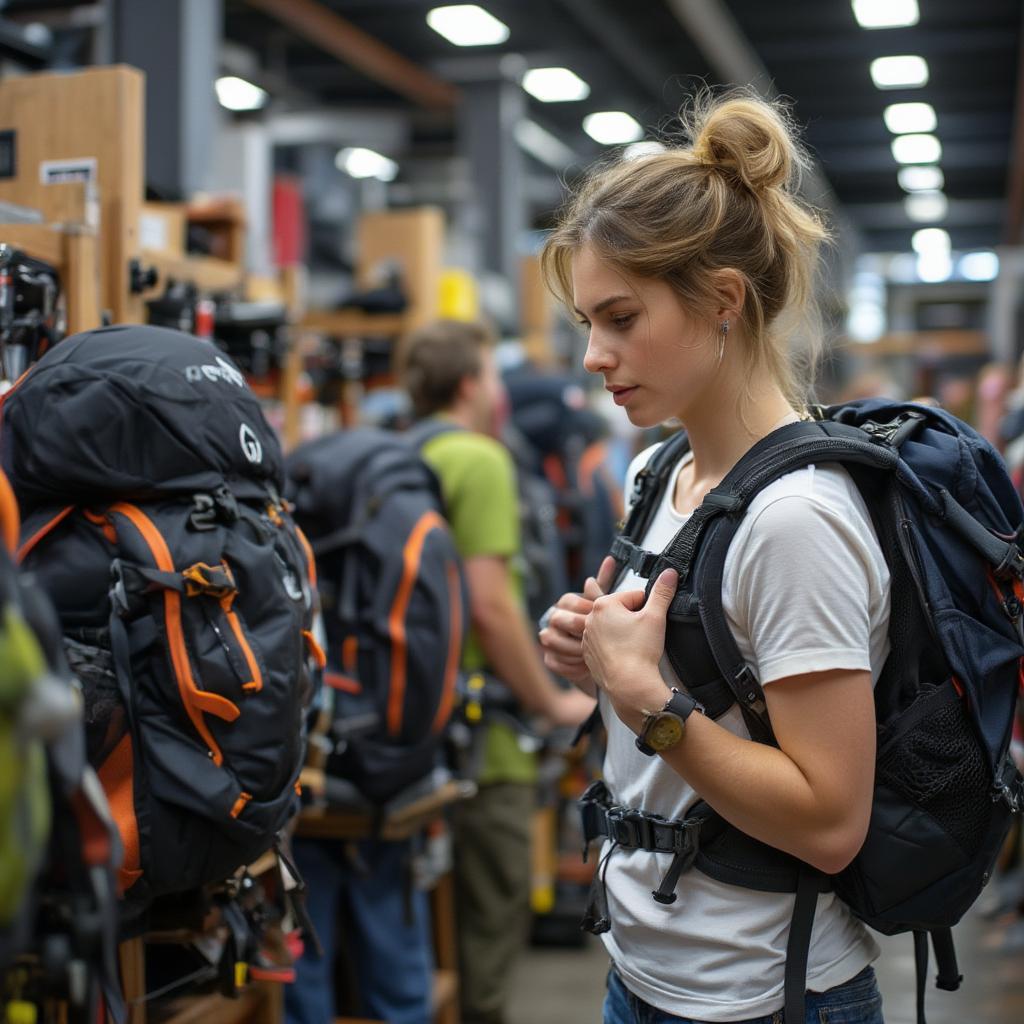The Ultimate Guide to Choosing the Perfect Travel Adapter

Packing for a trip can be exciting, but it often comes with a common headache: ensuring your electronics can actually be used at your destination. This is where a reliable Travel Adapter becomes an indispensable travel companion. It’s not just about plugging in your phone; it’s about staying connected, productive, and safe while exploring new territories.
Navigating the world of travel adapters can feel overwhelming at first, given the variety of plugs and voltages across different countries. Understanding the nuances of a travel adapter is key to avoiding blown fuses or worse, damaging your precious gadgets. We’ll explore the different types, their features, and how to choose the right one for your specific needs. So, are you ready to make sure your devices stay powered wherever you go? Let’s dive in!
Why a Travel Adapter Is Non-Negotiable
You might think, “Can’t I just buy a new charger when I get there?” While that’s a possibility, it’s usually more costly and inconvenient than bringing a travel adapter. Moreover, finding the correct charger in an unfamiliar place can be time-consuming and frustrating. A travel adapter is specifically designed to bridge the gap between your devices and the power outlets you’ll encounter overseas.
A travel adapter isn’t just a matter of convenience; it also ensures that your devices are used safely. Electrical standards vary widely from country to country, and using the incorrect adapter could lead to power surges, damage to your device, or even fire hazards. Knowing that your devices are protected with the proper voltage and plug type gives you the peace of mind to enjoy your travels without worry.
Types of Travel Adapters: A Breakdown
Before we get into the nitty-gritty of which one is right for you, let’s break down the common types of travel adapters available. Understanding the variations will help you make an informed purchase.
- Universal Adapters: These are your all-in-one solutions, designed to accommodate most plug types from around the world. They’re great for those who travel frequently to different countries. They typically include retractable prongs and a mechanism to switch between different configurations.
- Country-Specific Adapters: These adapters cater to the specific plug types of a particular country or region. If you’re consistently traveling to the same area, a country-specific adapter can be a more streamlined choice. They tend to be smaller, more robust, and may be more cost-effective than universal options.
- USB Adapters: With many devices now being charged via USB, these adapters include one or more USB ports, allowing you to charge your phone, tablet, or other USB-powered devices. They may or may not include the universal plug type for more conventional electronics.
- Travel Converters: These are used to change the voltage for those countries that have different electrical systems. While they also include the plug itself, converters are very important for appliances, like hairdryers and curling irons.
universal adapter with multiple plugs
Essential Features to Look For
When choosing a travel adapter, several features can make all the difference. Here’s what to keep in mind:
- Plug Compatibility: Ensure it supports the plug types used in your destination countries. Researching the types of plugs used in your intended countries is the first thing to do.
- USB Ports: If you have many USB devices, opt for an adapter with multiple ports. Many adapters come with a couple of regular USB ports and even USB-C ports for newer devices.
- Surge Protection: This protects your devices from voltage fluctuations, preventing damage. Surge protection is a non-negotiable feature, as this ensures safety and prolongs the lifespan of your electronics.
- Compact Design: A bulky adapter can take up valuable luggage space, so choose a compact option. A lightweight, small travel adapter will free up room for those extra souvenirs you want to bring back home.
- Voltage Conversion: For devices not rated for the voltage at your destination, be sure to use a converter in addition to the adapter. Failing to do this will cause the device to short circuit, or even pose a fire hazard.
“For anyone heading overseas, it’s important to take time to research the electrical requirements of your destination and buy the right equipment,” says Eleanor Vance, a travel tech consultant. “A good travel adapter can be a traveler’s best friend, keeping devices powered up and allowing seamless connectivity during travels.”
How to Choose the Right Travel Adapter for You
With all the options out there, it’s helpful to narrow down your choice based on how you travel. Consider the following questions to help you select the perfect adapter:
- Where are you traveling? If you’re just visiting a single country, a country-specific adapter might be sufficient. However, frequent travelers should consider a universal adapter that handles multiple plug types.
- How many devices will you be bringing? If you travel with a lot of electronics, you’ll need a travel adapter with multiple USB ports or plug options. Additionally, if you have appliances with different voltage requirements, be sure to get a converter along with the adapter.
- What is your budget? Adapters vary in price, so decide how much you’re willing to spend. While it’s tempting to go for the cheapest option, it is worth it to invest in a durable adapter with good quality.
To further assist you, consider the following table that provides a concise comparison:
| Feature | Universal Adapter | Country-Specific Adapter | USB Adapter |
|---|---|---|---|
| Plug Types | Multiple, Worldwide | Single, Specific Country | USB only or specific plug type |
| Port Options | Multiple Plug and USB Options | Single Plug Option | Multiple USB Ports |
| Portability | Can be bulkier | Compact | Compact, lightweight |
| Best For | Frequent International Travelers | Traveling to 1 country | USB Device Users |
| Price | Mid-range to High | Low to mid-range | Low to mid-range |
Using Your Travel Adapter Safely
Using a travel adapter correctly is as important as choosing the right one. Here are some tips for safe usage:
- Check the Voltage: Confirm your devices can handle the local voltage (usually 110V or 220V). In some countries, you’ll need a voltage converter if the voltage is different from what your device is rated for.
- Don’t Overload: Avoid plugging too many devices into one adapter. This can cause it to overheat and malfunction. It’s recommended to use one adapter per wall socket.
- Unplug When Not in Use: When not charging your devices, unplug the adapter from the wall outlet for safety. Leaving adapters plugged in for extended periods could cause them to overheat and increase the risk of a fire.
- Handle with Care: Treat your adapter well, don’t drop it, and store it in a cool, dry place. Treat this piece of equipment as carefully as you treat your phone.
- Look for Certifications: Ensure that the travel adapter you purchase meets international safety standards. This will help in ensuring safety and product quality.
Remember, a faulty adapter can damage your devices or even pose a safety risk. Always ensure that you are using the correct adapter, taking all precautions.
Travel Smart with Your Adapter
A travel adapter might seem like a small piece of gear, but it’s crucial for a smooth and worry-free journey. It ensures that you can power up your devices, stay connected with loved ones, and capture all those memorable moments. By taking the time to choose the right adapter and use it correctly, you’re setting yourself up for a much more enjoyable travel experience.
Travel Adapters: Beyond Just Plugging In
Think of your travel adapter as more than just a power source. It’s a critical tool for maintaining your comfort and safety while traveling. From ensuring you have access to vital GPS information on your phone to making sure you can plug in your camera to capture stunning landscapes, your adapter keeps your world turning even far away from home. As you’re planning your next trip, don’t let the logistics of power outlets cause you a headache. With the right adapter in tow, you can embrace your adventures with one less thing to worry about.
“Many travellers get hung up on the excitement of their trips and forget the essentials,” notes Mark Thompson, a seasoned travel blogger. “Getting a reliable travel adapter is one of the most important things you can do to ensure your devices stay powered. Do your research and buy a good-quality adapter; it’s worth it.”
Travel Adapter Maintenance
Proper maintenance can help your travel adapter last longer. Follow these tips:
- Keep it Dry: Avoid storing or using the adapter in wet conditions to prevent corrosion and damage. If it does come into contact with water, dry it immediately.
- Store in a Case: When not in use, store the adapter in a protective case to prevent damage or scratching. Protecting your investment in the long-term will ensure that you do not need to buy a new one before you travel.
- Inspect for Damage: Before each trip, examine the adapter for any signs of damage like cracks or loose parts. If the adapter looks like it’s about to break, then this is a sign that you may need to invest in a new one.
- Keep it Clean: Dust and debris can accumulate over time. Wipe the adapter clean using a soft cloth to ensure proper functionality.
Final Thoughts
Choosing a travel adapter doesn’t have to be complicated. By understanding the different types, features, and safety tips, you’re well on your way to picking the perfect companion for your next adventure. Don’t let power outlet differences slow you down – keep your devices powered and your travels worry-free! Now that you have a basic understanding of how to choose the perfect adapter for you, it will be that much easier to decide on where to go on your next vacation. Remember to keep in mind the different voltage, plug type, and all other needs for your trip, and you will be on your way to having the adventure of your dreams! If you’re thinking of where to go, check out best travel for ideas on your next vacation!
FAQs About Travel Adapters
-
What’s the difference between a travel adapter and a converter?
A travel adapter changes the plug shape so your device can fit into a different country’s outlet. A converter changes the voltage; most modern devices handle different voltages, but appliances often require a converter. -
How do I know which plug types are used in the countries I’m visiting?
Most websites will have a comprehensive list of plug types for every country. You can also check out Wikipedia or travel forums for specific info. A good rule of thumb is that if you do not know what type of plug a country uses, it’s a good idea to purchase a universal adapter. -
Can I use a travel adapter for high-powered appliances?
Not all travel adapters are designed for high-powered appliances such as hair dryers or electric kettles. If you plan on taking these, be sure to also travel with a converter as some appliances need them. -
How many USB ports should my travel adapter have?
This depends on the number of USB-powered devices you use. If you have a phone, tablet, and perhaps a smartwatch, a 2-4 USB port adapter may be suitable. -
Is it safe to use a cheap travel adapter?
Cheap travel adapters may not meet safety standards and could pose a fire risk or damage your devices. Investing in a quality adapter is always the safer choice. -
Do universal travel adapters work in all countries?
Most universal adapters are compatible with outlets in the majority of countries, but it’s always good to double check before purchasing to be sure. -
Can I use a travel adapter as an extension cord?
Travel adapters are not designed to be used as extension cords. Plugging in too many devices may overload the adapter, creating an electrical hazard. -
What is the difference between a plug and a socket?
A plug is what is attached to the device you want to charge, and the socket is the place that the plug goes into. When getting an adapter, you will have to change the plug type so that it will go into the socket. -
How do I know what the voltage is of my destination?
You can easily find the voltage by doing a quick online search. Be sure to check the voltage before traveling so you know that you will need a converter or not.




